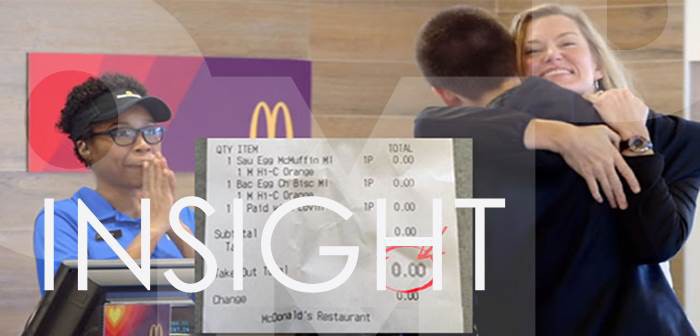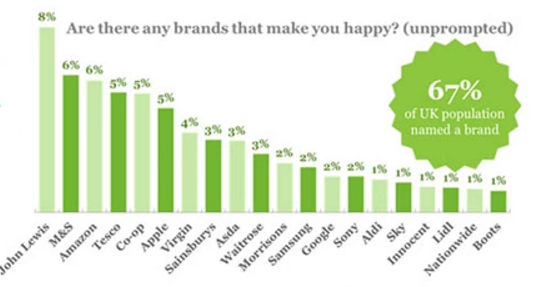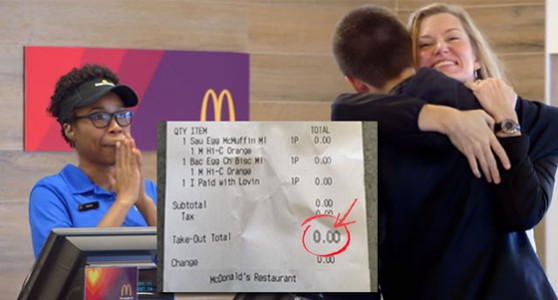Happiness is a subject that has fascinated us as far back as ancient Greece with philosophers such as Socrates, Plato and Epicure exploring the topic. Long considered a luxury and an abstract concept, it is a subject that is trending like never before: there are happiness scientists, happiness universities and happiness degrees all over the world and even an equation that predicts it.
The famous Mad Men line says ‘Advertising is based one thing: Happiness’, but how can advertising create happiness?
First things first, happiness is known as not a constant state but momentary. There is not a happy life, there is a life made of happy moments (as explained by Paul Dolan, Happiness Scientist, during the Wired Conference of 2015).
According to the University of London who came up with an equation predicting happiness, those moments come not from when things are working out as planned but from exceeded expectations. Therefore, positive surprise may be more efficient than pure reward to make a happy consumer.
67% of Brits said there was a brand that made them happy (source: the Guardian). The top 20 featured retailers (John Lewis, M&S, Boots), pure players (such as Amazon), tech brands (Apple, Samsung and Google), media brands (Virgin and Sky), banks (such as Nationwide) and drinks (such as Innocent).
When looking at the Iscobel and Cog Research study ‘Happy Brands’, there seems to be a correlation between emotions of happiness for a brand and perceptions of trust, honesty, and generosity. Feelings that grow proportionally with the consistency of ad communications and experiences. It seems key to not only share values that matter to consumers, but also be believable and consistent to the brand’s DNA.
Finally as the experiment from SoulPancake shows, happiness is bigger when shared.
Who hasn’t started laughing by hearing someone else doing so?
Therefore brands sharing this value and being happy themselves will transmit this feeling to consumers.
Some brands have understood this well and put happiness at the heart of their strategy. Such examples feature McDonald’s campaign ‘Pay with Lovin’ ’ where consumers were able to use emotional connection as a currency.
Another great example is the long-time happiness advocate, Coca-Cola, who launched #MakeItHappy on Twitter and replied to negative tweets with cheery imagery.
So, surprising the consumer, creating exciting experiences, activating specific moments, capitalising on important values and spreading happiness with credibility are factors that will put a smile on your target’s faces.
However, this is not a fixed formula as achieving happiness differs for each generation. While the Baby Boomers want to achieve over all a free spirit, Gen X are all about consumerism and Millennials want meaningful experiences, it is key for brands to talk about happiness through the lens of their audience’s own lives for the best result.





